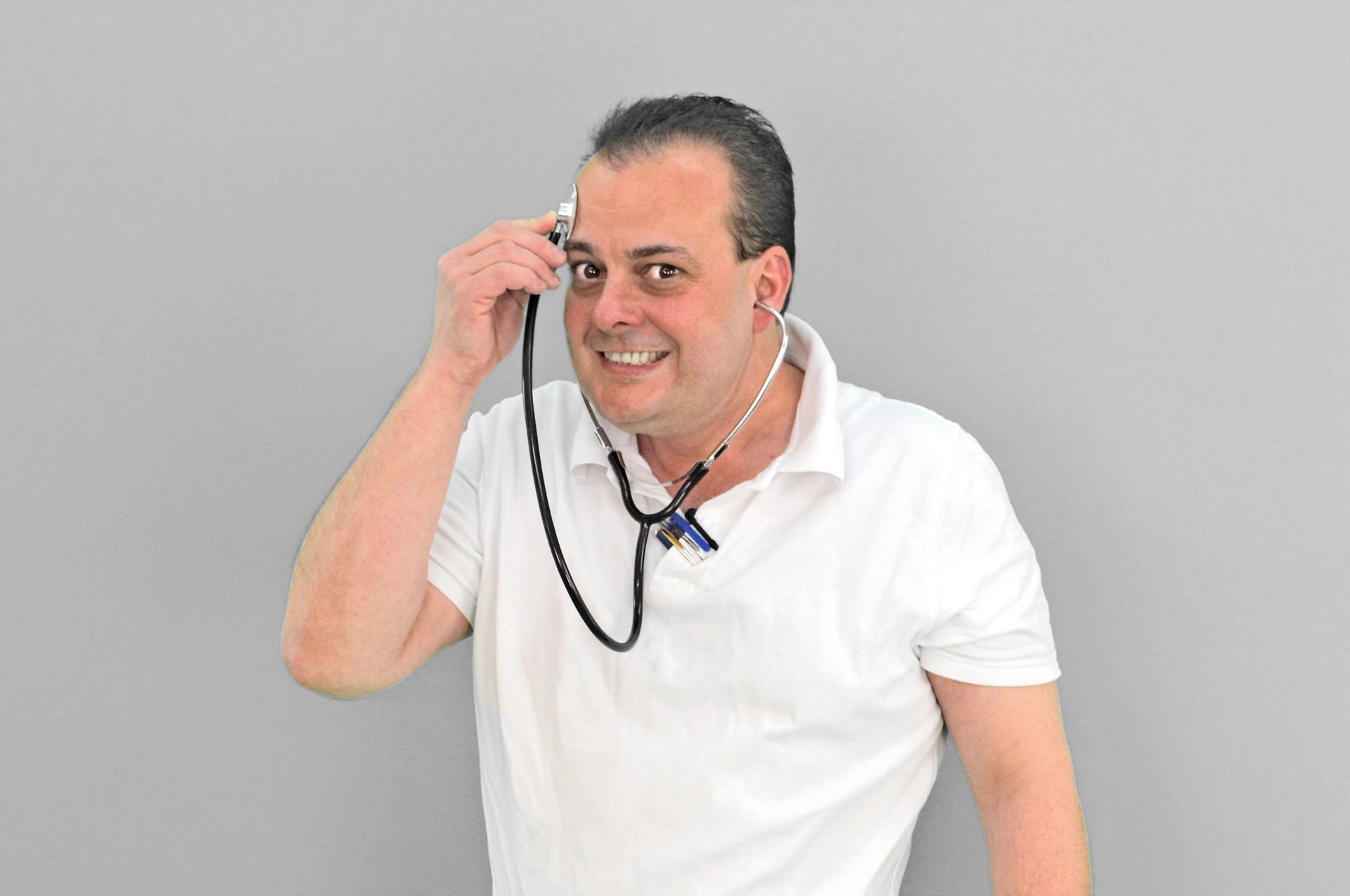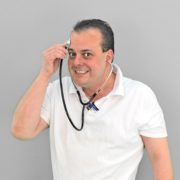How’s Your Corpus Callosum?

I knew it! There had to be a plausible reason to justify my keeping two guitars within eight feet of my office desk and a legitimate explanation for my inability to resist playing one or the other a couple of times a day.
I now have an excuse for when my wife asks why I’m playing Tommy Emmanuel’s “Mr. Guitar” for the 735th time in the middle of the day instead of being heads down on a revenue-generating activity or writing another 500 words toward one of the many book ideas I have.
I can now shut that down by telling her that I am developing my corpus callosum. That should stop her in her tracks, don’t ya think?
It sure stopped me when I read it. I actually read it and heard it in this fascinating, informative four-minute YouTube video embedded in this Next Avenue article.
 Turns out that pounding on my 51-year- old Gibson Hummingbird every day is doing more for me than just relieving stress, which is my primary reason for reaching for it in the first place.
Turns out that pounding on my 51-year- old Gibson Hummingbird every day is doing more for me than just relieving stress, which is my primary reason for reaching for it in the first place.
It turns out that just listening to music doesn’t do much to enhance brain function but playing a musical instrument – and I quote the video – “increases the volume and activity in the brain’s corpus callosum, the bridge between the two hemispheres, allowing messages to get across the brain faster and through more diverse routes.”
I just knew it all along.
The video gets even better as it goes on to say that this increased corpus callosum activity “may allow musicians to solve problems more effectively and creatively in both academic and social settings.” It then says further that musicians often have higher levels of executive function including planning, strategizing and attention to detail. And better memory.
I guess I need to play more each day because I suck at those three “executive functions” and my memory is up there in the sucky category also. I’m sure it’s just a question of hitting the 1000 mark on “Mr. Guitar” in the next few weeks and my executive functions will miraculously appear and my memory be dazzling.
Or maybe not.
OK, what’s the point?
The point is that we’ve learned a staggering amount about how our brains work over the last couple of decades with the advent of advanced radiology tools such as Functional Magnetic Resonance Imaging (fMRi) and Positron Emission Tomography (PET) scans.
 We can now see what lights up in our brain with certain activities. When they watched the brain of a subject listening to music, they saw fireworks. But when they observed the brain of someone playing an instrument the “backyard fireworks turned into a jubilee.”
We can now see what lights up in our brain with certain activities. When they watched the brain of a subject listening to music, they saw fireworks. But when they observed the brain of someone playing an instrument the “backyard fireworks turned into a jubilee.”
I liked that visual – the thought that my brain was fireworks when I worked at learning a new finger-style song on my Hummingbird or a chord melody to a jazz tune on my jazz guitar.
Our brains, about 2 ½ pounds of fatty acid, are essentially like a muscle, subject to atrophy just as any muscle. “Use it or lose it” is real and never more applicable than with our brains.
This fatty-acid muscle starts at birth with around 100 billion neurons and should end with about the same amount. The myth of “automatic senescence” would have us believe that we lose neurons and the brain shrinks as we age. True, that it will shrink a bit in actual size but untrue that the neuron count shrinks – unless we choose to let it shrink.
It’s all about synapses!
Here’s a contrast for you to chew on. Brain studies with these new technologies determined that there was no difference in synaptic connecting activity in the brains of people staring at a brick wall and those who were watching television.
Put that in your “Game of Thrones” or “Will and Grace” pipe and smoke it.
If we start with the fundamental understanding that it’s not about the neurons and that its about the synaptic connections that the neurons are there to facilitate we can put a more meaningful brain health strategy in place.
If a neuron doesn’t have anything to do, it’s gonna retire (there’s that word again) into atrophy and die off. However, if it’s got something to do – as in remembering how to play C-minor 7th chord with a flatted 5th in third position on the guitar at the appropriate time in a challenging new tune – do you think it might wake up and show its intended usefulness?
 But I’ve got my crossword puzzles and sudoku – –
But I’ve got my crossword puzzles and sudoku – –
Good – to a point. We’ve learned that puzzles, sudoku, and their ilk are brain healthy until they become neutral. Like any activity that you repeat over and over again, you get good at it and then it isn’t a stretch. So your brain doesn’t increase it’s synaptic activity much if that is as far as you go in stimulating your brain. Sure, you can migrate from your local newspaper crossword to the New York Times crossword, but the same thing will happen – over time it too will become rote.
In all my fascination with the brain and the reading and study I’ve done, it seems there are three activities that continually come up as “brain stretchers” that most likely create “firework jubilees”:
- Playing a musical instrument, especially piano or guitar (OK, I’m biased)
- Learning a foreign language.
- Dancing. You get a multiple-dip here because you not only have to think hard, coordinate several parts of your body, listen to music but you also get a nice dose of exercise.
Tommy Emmanuel is helping me live longer
I took about a 30-year sabbatical from guitar playing as I did the expected cultural/corporate thing to keep up with the Joneses, only occasionally picking up my Gibson for a few minutes during any given week. But my wife had been encouraging me to get back at it and surprised me with a nice jazz guitar for my 60th birthday.
My journey with the guitar had started with R&R, migrated to a serious study of jazz guitar in the 60’s (anybody remember Howard Roberts?) and then went dormant. My new jazz guitar got me seriously back into my passion for learning and playing jazz chord melodies.
Then it happened. Somebody sent me a YouTube of an Australian finger-style guitarist named Tommy Emmanuel playing “Somewhere Over the Rainbow” and my guitar life shifted. Upon hearing that rendition and seeing Tommy’s technique I decided I need to learn fingerstyle guitar and that has consumed my guitar playing journey for the last 10+ years.
With Tommy as an unattainable benchmark, I’ve learned that music, and the guitar, in particular, has no top end threshold – you can never master it. Even Tommy, arguably the best and most recognized finger-style guitar artist on the planet, acknowledges this. His motto is to “get better every day” and he’s been getting better now for over 50 years.
Pushing myself with Tommy as the mentor/teacher, I believe I keep more neurons alive and continue to add synaptic connections to keep my brain healthier.
Were you to listen to me play guitar, assuming you’ve never had more than a five-minute encounter with the instrument, you would say that I’m a pretty good guitar player. Relative to the masses, probably so. But bounced up against a master like Tommy and many others, I’m comfortable settling into the “advancing beginner” category knowing I can only scratch the surface of the potential but have an opportunity to use the instrument to move the needle a little bit each time I pick it up.
I really think my brain appreciates that. And will reward me in the long run.
What do you do to build your “corpus callosum?” Scroll down and leave a comment about what activities you enjoy to stimulate your brain and your thinking.
Also, if you haven’t subscribed to our weekly newsletter, go to www.makeagingwork.com and sign up. We’ll send you a free ebook on living longer, healthier and more productively.





Thank you for this article Gary. The rendition of “Somewhere Over The Rainbow” created the “fireworks” and I am now headed upstairs to play my piano and put my brain into the “fireworks jubilee”. I am going to develop my corpus callosum thanks to you! Good stuff, love your writing.
Thanks, Gail. I didn’t know you played the piano – go for it!! It’ll help the hands and fingers also. My best to Spud – hope all is well.